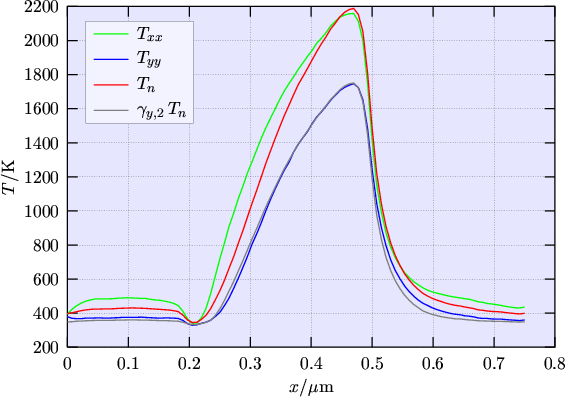|
|
|
|
||
| Previous: 6. Modeling and Application Up: 6. Modeling and Application Next: 6.2 Closure Relation Modeling | ||||
Fig. 6.1 shows the anisotropy function ![]() obtained by Monte Carlo
simulation. The two branches of the Monte Carlo results stem from the different circumstances in
the regions of carrier heating and carrier cooling. Since modeling of the anisotropic
temperature is only an approximation of a second-order effect, usage of a single valued
function appears to be justified. An important property is that
obtained by Monte Carlo
simulation. The two branches of the Monte Carlo results stem from the different circumstances in
the regions of carrier heating and carrier cooling. Since modeling of the anisotropic
temperature is only an approximation of a second-order effect, usage of a single valued
function appears to be justified. An important property is that
![]() drops
beginning from unity and saturates for high temperatures. This means that the distribution
becomes anisotropic at high temperatures whereas the equilibrium distribution stays isotropic,
which is consistent with the fact that the equilibrium solution of BOLTZMANN's transport equation is the isotropic
MAXWELL distribution function.
drops
beginning from unity and saturates for high temperatures. This means that the distribution
becomes anisotropic at high temperatures whereas the equilibrium distribution stays isotropic,
which is consistent with the fact that the equilibrium solution of BOLTZMANN's transport equation is the isotropic
MAXWELL distribution function.
Two analytical anisotropy functions shown in Fig. 6.1 have been investigated:
 |
M. Gritsch: Numerical Modeling of Silicon-on-Insulator MOSFETs PDF